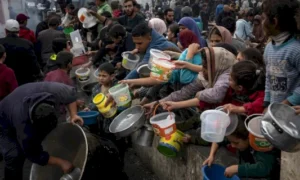Increased access for women to politics and the workforce has narrowed the global gender gap in the past 10 years
The World Economic Forum’s annual gender survey, confirmed sweeping changes in many countries, with 105 becoming more equal since 2005, said its author, Saadia Zahidi.
Iceland tops the list for the sixth year running, with Yemen placed last.
The WEF looked at economic factors, health, education and political participation in 142 countries. Just six nations – Sri Lanka, Mali, Croatia, Macedonia, Jordan and Tunisia – have seen their gender gap grow overall since 2005, the WEF said.
Overall rankings
Top 10
- 1. Iceland
- 2. Finland
- 3. Norway
- 4. Sweden
- 5. Denmark
- 6. Nicaragua
- 7. Rwanda
- 8. Ireland
- 9. Philippines
- 10. Belgium
Bottom 10
- 133. Morocco
- 134. Jordan
- 135. Lebanon
- 136. Cote d’Ivoire
- 137. Islamic Republic of Iran
- 138. Mali
- 139. Syria
- 140. Chad
- 141. Pakistan
- 142. Yemen
One of the reasons for Iceland’s success is its relatively small population while Yemen struggles due to high mortality rates and high rates of girls aged six to 14 not in school. Rwanda came into the rankings for the first time and took seventh place, making it the highest-ranking African economy. United Arab Emirates and Qatar, placed at 115 and 116, were highest ranked in the GCC region.
Report author Saadia Zahidi said Rwanda’s success was because there are almost as many women as men at work – and in the country’s ministerial offices – rather than because of improved access to health and education services.
Nicaragua rose to become the sixth-best place for women (up from 10 last year). The Philippines remained the highest-ranking Asian state, but fell from fifth to ninth place.
The outcomes of these scores are influenced by social forces.
India, for example, fell 13 places to 114th this year and is the lowest out of the so-called Brics countries. But politically, India, at 15, is higher in the rankings than the US, at 54 and the UK, at 33. The WEF said this is as India generally has a lot of women leaders in politics, including senior leaders such as Sonia Gandhi.
Ms Zahidi said women’s participation in public life in India had been adversely affected by questions around whether it is safe to use public transport.
Globally, much of the progress on gender equality has come from more women entering politics and the workforce, she said.
She added: “While more women and more men have joined the workforce over the last decade, in 49 countries, more women than men entered the labour force. And in the case of politics, globally, there are now 26% more female parliamentarians and 50% more female ministers than 10 years ago. These are sweeping changes – for economies and national cultures”.
How the WEF measures the gender gap:
- Can women work and do they get the same pay for the same job?
- Do they have access to education?
- Are they allowed to exercise political power?
- What about health – not just the life expectancy of women, but the ratio of women to men within society?
To read more, go to http://wef.ch/gendergap14


























